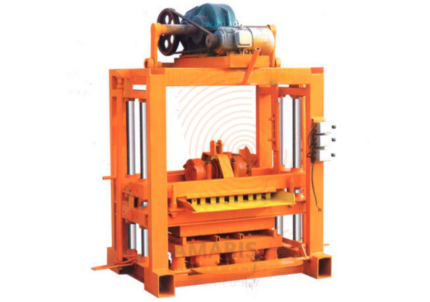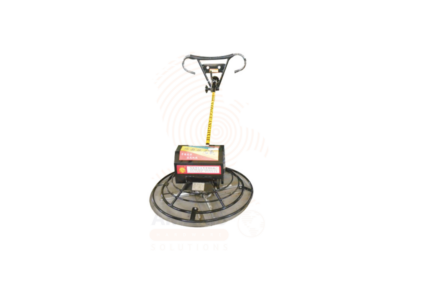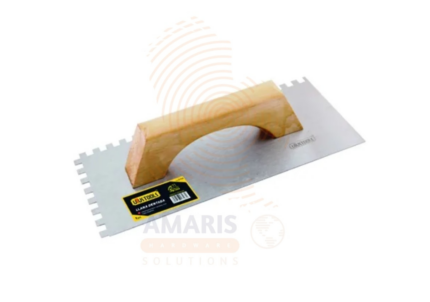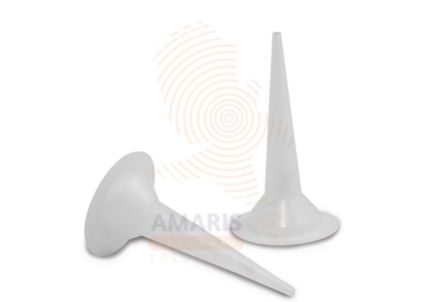
Wire Brush Set
$12.50 Original price was: $12.50.$11.88Current price is: $11.88.
Concrete Mixer
WhatsApp Order
A concrete mixer is a vital construction machine designed for perfectly blending cement, aggregates (such as sand and gravel), and water into high-quality concrete. It features a rotating drum on a sturdy frame—either powered by electricity, gas, or manually—that keeps the mixture in a homogenous, workable state to ensure consistency with each batch. Concrete mixers mitigate manual labor, speed up work, and guarantee a uniform concrete mix suitable for foundations, slabs, pillars, beams, driveways, and more. Variants include portable barrel mixers for small projects and large-capacity tilt or drum mixers for commercial use, ensuring proper mixing, reducing waste, and improving overall construction efficiency.
Description
Table of Contents
ToggleConcrete Mixer
Uses
-
Mixing Concrete for Construction
-
Creates uniform mortar for pouring foundations, sidewalks, driveways, and structural components.
-
-
Preparing Mortar and Grout
-
Mixes dry materials with water to form porous or grout for tiling and masonry.
-
-
Landscaping and Outdoor Projects
-
Produces concrete for constructing paths, flowerbeds, hardscaping, and garden features.
-
-
Repair Work
-
Facilitates quick on-site mixing for pothole repairs, patching damaged slabs, and fixing curbs.
-
-
Batch Mixing for Small Jobs
-
Offers efficient small-batch mixing to minimize concrete waste and maintain freshness.
-
-
Industrial and Commercial Building
-
Powers medium- to large-scale construction sites with consistent concrete supply for beams, pillars, and infrastructure.
-
-
DIY and Residential Applications
-
Ideal for mixing small quantities of concrete for home improvement, setting posts, or building patios.
-
-
Creative and Artistic Projects
-
Used for crafting decorative elements like planters or sculptures with custom mixes.
-
-
Agricultural Uses
-
Mixes batches for constructing fencing posts, foundations of outbuildings, or laying concrete floors in barns.
SAFETY HANDLING PRECAUTIONS
Safety Precautions
-
Wear Protective Gear
-
Use safety goggles or glasses to guard against splashes of cement or aggregate.
-
Wear gloves to protect hands from abrasive or caustic concrete and to improve grip.
-
Use a dust mask when loading dry mix to prevent respirable silica exposure.
-
Wear hearing protection around loud, engine-powered mixers.
-
-
Inspect Equipment Before Use
-
Check the drum, frame, and mixing blades for cracks or wear.
-
Verify that the power cord or fuel lines are intact, and wheels or supports are stable.
-
-
Stabilize the Mixer
-
Position the mixer on level ground to prevent tipping.
-
Secure wheels or use stands if available.
-
-
Mixing Safety
-
Load components in correct order—typically water first, then aggregate and cement—to reduce splash.
-
Avoid overloading beyond capacity to prevent motor strain or instability.
-
Never insert hands or tools into the drum while it is rotating.
-
-
Electrical and Fuel Safety
-
For electric mixers: use properly grounded outlets and inspection for damage; keep electrical connections dry.
-
For fuel mixers: fuel only when cooled; store fuel in approved containers and avoid spills or ignition sources.
-
-
Cleaning and Maintenance
-
Clean the drum after use before concrete hardens; use water and a brush or designated cleaning tool.
-
Turn off and unplug or shut down the mixer before cleaning.
-
-
Work Area Safety
-
Keep area around the mixer clear of clutter and walkways unobstructed.
-
Use caution when maneuvering wet, slippery mixer trailers.
-
-
Emergency Preparedness
-
Know how to shut the mixer off quickly.
-
Keep a fire extinguisher or first-aid kit nearby if working with fuel or in remote locations.
-
-
Training and Operation
-
Only trained individuals should operate the mixer.
-
Review manufacturer instructions thoroughly before use.
-
Related products
Block Making Machine
A Block Making Machine is a specialized construction equipment designed to produce high-quality concrete blocks, bricks, and pavers used in building and infrastructure projects. It automates the process of mixing, molding, compacting, and curing concrete materials into consistent, uniform blocks of various sizes and shapes. These machines can be manual, semi-automatic, or fully automatic, depending on their level of automation and production capacity. They are widely used in commercial, industrial, and residential construction projects for producing large volumes of concrete masonry units efficiently.
Cement Blender
A cement blender is a mechanical device designed for the purpose of mixing and blending various components of cementitious materials, such as cement, sand, and water, to create a homogenous mixture. This blended mixture is commonly used in construction and building projects, particularly for applications like concrete production. The blender typically features a rotating drum or container that facilitates the thorough mixing of the ingredients, ensuring a consistent and uniform composition for the construction materials.
Fiberglass Open Reel Long Tape Rule
A Fiberglass Open Reel Long Tape Rule is a measuring tool designed for accurately determining distances in various applications, such as construction, surveying, and landscaping. It typically consists of a durable, flexible fiberglass tape housed on an open reel. The fiberglass material provides strength and resistance to stretching, ensuring precise measurements over extended lengths. The open reel design allows for easy deployment and retraction of the tape, facilitating efficient use in outdoor and large-scale measurement scenarios. These tapes often feature clear and legible markings, making them suitable for both personal and professional use in situations where accurate and reliable distance measurements are essential.
Pavement Trowelling
Pavement Trowelling refers to the process of smoothing, finishing, and compacting freshly poured concrete or cement surfaces using a trowel machine—also known as a power trowel or concrete float. This equipment uses rotating blades mounted on a frame (ride-on or walk-behind) to level and polish concrete surfaces, typically in pavements, industrial floors, and large slabs. It enhances the surface strength, appearance, and durability by closing surface pores and bringing fine materials to the top. Pavement trowelling ensures a flat, professional finish that resists wear, dust, and water.
Plastering Trowel with Teeth – Wood Handle
A Plastering Trowel with Teeth - Wood Handle is a specialized tool used in the field of construction and masonry for applying and texturing plaster or stucco on walls and ceilings. The trowel is characterized by having teeth or serrations on its surface, which create grooves or patterns in the applied material. The wooden handle provides a comfortable grip for the user. This type of trowel is commonly used to achieve specific textures or patterns in plasterwork, adding both decorative and functional elements to the finished surface.
Plastic Nozzle for Aluminum Caulking Gun
A Plastic Nozzle for Aluminum Caulking Gun is a detachable dispensing tip or extension made of plastic that is designed to be attached to the end of an aluminum caulking gun. This nozzle serves as the outlet through which caulk or sealant is dispensed, allowing for precise application and control of the material. The plastic construction of the nozzle ensures compatibility with various types of caulks and sealants, and it is typically designed for easy cleaning and reuse. The combination of a plastic nozzle with an aluminum caulking gun provides a durable and versatile tool for applying sealants in construction, home improvement, or other similar applications.
Tile Grout Float
A tile grout float is a tool used in the process of installing ceramic or stone tiles. It typically consists of a flat, rectangular or square-shaped rubber or foam pad attached to a handle. The purpose of a tile grout float is to apply and spread grout into the joints between tiles. The flat surface of the float helps ensure an even distribution of grout and allows for effective filling of spaces between tiles. After the grout is applied, excess grout can be wiped away with the edge of the float. Overall, a tile grout float is an essential tool for achieving a clean and professional finish when grouting tile installations.
Tile Spacer
A tile spacer is a small, typically plastic or cross-shaped tool used in the installation of tiles. Its primary function is to maintain consistent and uniform gaps between tiles during the installation process. These gaps, known as grout lines, ensure that tiles are evenly spaced and allow for the application of grout, which helps secure the tiles in place and provides a finished look to the tiled surface. Tile spacers come in various sizes to accommodate different spacing preferences and tile dimensions, contributing to a professional and aesthetically pleasing tile installation.


 Acrylic Sealants
Acrylic Sealants Construction Adhesives
Construction Adhesives Double-Sided Tape
Double-Sided Tape Duct Tape
Duct Tape Electrical Tape
Electrical Tape Epoxy & Resins
Epoxy & Resins Masking Tape
Masking Tape
 Automotive Wrenches & Socket Sets
Automotive Wrenches & Socket Sets Battery Chargers & Jump Starters
Battery Chargers & Jump Starters Car Jacks & Stands
Car Jacks & Stands Car Wash & Detailing Products
Car Wash & Detailing Products Diagnostic Tools
Diagnostic Tools Tire Inflators
Tire Inflators Vehicle Lighting
Vehicle Lighting Oil & Lubricants
Oil & Lubricants
 Adhesives & Sealants
Adhesives & Sealants Bricks & Blocks
Bricks & Blocks Cement & Concrete
Cement & Concrete Drywall & Plaster
Drywall & Plaster Flooring (Tiles, Wood, Laminate)
Flooring (Tiles, Wood, Laminate) Lumber & Plywood
Lumber & Plywood Paints, Primers & Coatings
Paints, Primers & Coatings Insulation Materials
Insulation Materials Roofing Materials
Roofing Materials
 Circuit Breakers
Circuit Breakers Electrical Cables & Wires
Electrical Cables & Wires Switches & Sockets
Switches & Sockets Fuses & Relays
Fuses & Relays Connectors & Terminals
Connectors & Terminals Electrical Boxes & Panels
Electrical Boxes & Panels Conduit & Fittings
Conduit & Fittings Lighting Fixtures & Bulbs
Lighting Fixtures & Bulbs Extension Cords & Power Strips
Extension Cords & Power Strips
 Anchors
Anchors Bolts
Bolts Clips & Clamps
Clips & Clamps Screws
Screws Nuts
Nuts Washers
Washers Rivets
Rivets Nails
Nails Threaded Rods
Threaded Rods
 Hammers
Hammers Measuring Tools (Tapes, Levels, Calipers)
Measuring Tools (Tapes, Levels, Calipers) Screwdrivers
Screwdrivers Pliers & Cutters
Pliers & Cutters Saws & Blades
Saws & Blades Chisels & Punches
Chisels & Punches Allen Keys & Hex Keys
Allen Keys & Hex Keys Ratchets & Socket Sets
Ratchets & Socket Sets Wrenches & Spanners
Wrenches & Spanners
 Power Tool Accessories (Blades, Bits, Discs)
Power Tool Accessories (Blades, Bits, Discs) Rotary Tools
Rotary Tools Saws (Circular, Jigsaw, Reciprocating)
Saws (Circular, Jigsaw, Reciprocating) Drills & Drivers
Drills & Drivers Grinders & Sanders
Grinders & Sanders Heat Guns
Heat Guns Nail Guns
Nail Guns Impact Wrenches
Impact Wrenches Batteries & Chargers
Batteries & Chargers
 Pipes & Fittings (PVC, Copper, PEX)
Pipes & Fittings (PVC, Copper, PEX) Plumbing Tools
Plumbing Tools Pumps & Motors
Pumps & Motors Sealants & Adhesives for Plumbing
Sealants & Adhesives for Plumbing Valves & Taps
Valves & Taps Water Heaters
Water Heaters Drainage Systems
Drainage Systems Faucets & Fixtures
Faucets & Fixtures Hoses & Tubing
Hoses & Tubing
 Hinges & Latches
Hinges & Latches Hooks & Brackets
Hooks & Brackets Window Hardware
Window Hardware Chains & Cables
Chains & Cables Casters & Wheels
Casters & Wheels Shelving & Storage Systems
Shelving & Storage Systems Door Handles & Locks
Door Handles & Locks Drawer Slides & Cabinet Hardware
Drawer Slides & Cabinet Hardware
 Personal Protective Equipment (PPE)
Personal Protective Equipment (PPE) Respirators & Masks
Respirators & Masks Safety Glasses
Safety Glasses Safes
Safes Security Cameras
Security Cameras Gloves
Gloves Helmets
Helmets Ear Protection
Ear Protection Fire Safety Equipment
Fire Safety Equipment Locks & Padlocks
Locks & Padlocks Motion Sensors & Alarms
Motion Sensors & Alarms
 Garden Fencing
Garden Fencing Garden Furniture Hardware
Garden Furniture Hardware Lawn Mowers
Lawn Mowers Trimmers & Edgers
Trimmers & Edgers Shovels & Spades
Shovels & Spades Rakes & Hoes
Rakes & Hoes Pruning Shears & Loppers
Pruning Shears & Loppers Watering Systems (Hoses, Sprinklers, Nozzles)
Watering Systems (Hoses, Sprinklers, Nozzles)
 Interior Paints
Interior Paints Paint Brushes & Rollers
Paint Brushes & Rollers Paint Strippers & Thinners
Paint Strippers & Thinners Paint Trays & Accessories
Paint Trays & Accessories Exterior Paints
Exterior Paints Spray Paints
Spray Paints Primers & Undercoats
Primers & Undercoats Varnishes & Stains
Varnishes & Stains
 Gaskets & Seals
Gaskets & Seals Hydraulic Fittings
Hydraulic Fittings Industrial Fasteners
Industrial Fasteners Industrial Hoses
Industrial Hoses Lubricants & Greases
Lubricants & Greases Metal Sheets & Bars
Metal Sheets & Bars Bearings & Bushings
Bearings & Bushings Belts & Pulleys
Belts & Pulleys
 HVAC Filters
HVAC Filters Insulation for HVAC
Insulation for HVAC Air Conditioners
Air Conditioners Refrigerants
Refrigerants Ventilation Ducts & Fittings
Ventilation Ducts & Fittings Thermostats & Controllers
Thermostats & Controllers Fans & Blowers
Fans & Blowers
 Pegboards & Hooks
Pegboards & Hooks Shelving Units
Shelving Units Storage Bins & Containers
Storage Bins & Containers Toolboxes & Tool Chests
Toolboxes & Tool Chests Workbenches
Workbenches Drawer Organizers
Drawer Organizers Labeling Supplies
Labeling Supplies
 Welding Accessories (Clamps, Brushes)
Welding Accessories (Clamps, Brushes) Welding Electrodes & Rods
Welding Electrodes & Rods Welding Helmets & Gloves
Welding Helmets & Gloves Welding Machines
Welding Machines Soldering Irons & Stations
Soldering Irons & Stations Flux & Solder Wire
Flux & Solder Wire
 Generator Accessories
Generator Accessories Inverters
Inverters Portable Generators
Portable Generators Power Inverters
Power Inverters Transfer Switches
Transfer Switches Diesel & Gasoline Generators
Diesel & Gasoline Generators
 Transport Equipment: Carts, Dollies, and Hand Trucks
Transport Equipment: Carts, Dollies, and Hand Trucks Storage Solutions: Pallets, Racks, and Containers
Storage Solutions: Pallets, Racks, and Containers Lifting Equipment: Hoists, Cranes, and Jacks
Lifting Equipment: Hoists, Cranes, and Jacks Conveyors and Accessories: Belts and Rollers
Conveyors and Accessories: Belts and Rollers











